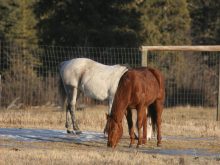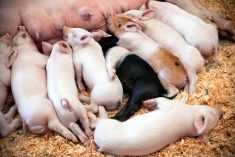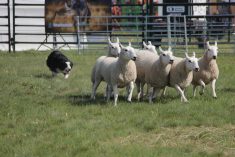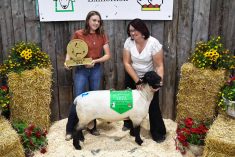Biotechnological advances may benefit humans, but the effects on animals used in experiments are still unclear.
Transgenics and cloning research aims to increase animal growth, improve body composition and build disease resistance. Other research involves manipulating the DNA of animals to produce proteins for the treatment of human disease.
But some studies have found unforeseen physical problems in the second generation of transgenic animals. As well, some experiments do not cross over between species.
For example, a growth hormone was used on mice to produce giant rodents. When this same technique was used on pigs the animals grew bigger but also developed serious arthritis.
Read Also

Why selenium is still an important factor in horse health
Selenium is an essential equine trace mineral that supports antioxidant defense, muscle integrity, immune function, metabolism and thyroid activity.
“The one problem with transgenics is unlike a lot of other areas of science, is that it is often very difficult to predict what the outcome might be,” Alberta Agriculture animal welfare specialist John Church said at a recent livestock care conference in Calgary.
“This is often cited as a reason for damning all genetic modification in livestock.”
Dan Weary of the University of British Columbia said the industry takes the charges seriously.
He is part of an expert panel assessing the welfare of animals involved in bioengineering research.
However, microbiologist Gill Schultz from the University of Calgary said the technology is becoming more sophisticated and the side effects are disappearing. This offers new hope for advances in human medicine, he added.
“There are good things that can come out of this.”
Obvious advantages
For example, scientists are attempting to manipulate genes that turn on during the right stage of an animal’s life to produce beneficial results.
This could include a gene that prevents the production of hormones at puberty and ends the need for castration. Immune systems could be improved, eliminating the need for vaccination.
Cloning is also expected to become more cost effective and beneficial in the future. At present, most pregnancies carrying clones fail by 50 days gestation, but within 10 years the technique may be more viable.
Church and Schultz argue that cloning has value, but science must proceed with caution.
Cloning could be an effective way to multiply superior livestock by rapidly distributing genetic progress from elite herds to commercial farmers. It could also be used to preserve indigenous breeds and broaden genetic diversity.
“Cloning may provide a much simpler and more effective means of conserving these species,” said Church.
Cloning’s real advantage is the production of transgenic animals that carry genes from another species, giving them disease resistance or stimulating production of proteins that could benefit human medicine.
Dolly the sheep garnered considerable attention when it was grown from a single cell from its mother’s uterus in 1997.
However, the more impressive sheep was the next generation, when British scientists created Polly through cloning. The early developing embryonic cells received human gene coding for a blood clotting factor.
“Polly now contains that human gene in every cell of her body,” Church said.
However, deriving proteins from animals carries some disease risk, especially if pigs are used, because some strains of influenza start with pigs.















